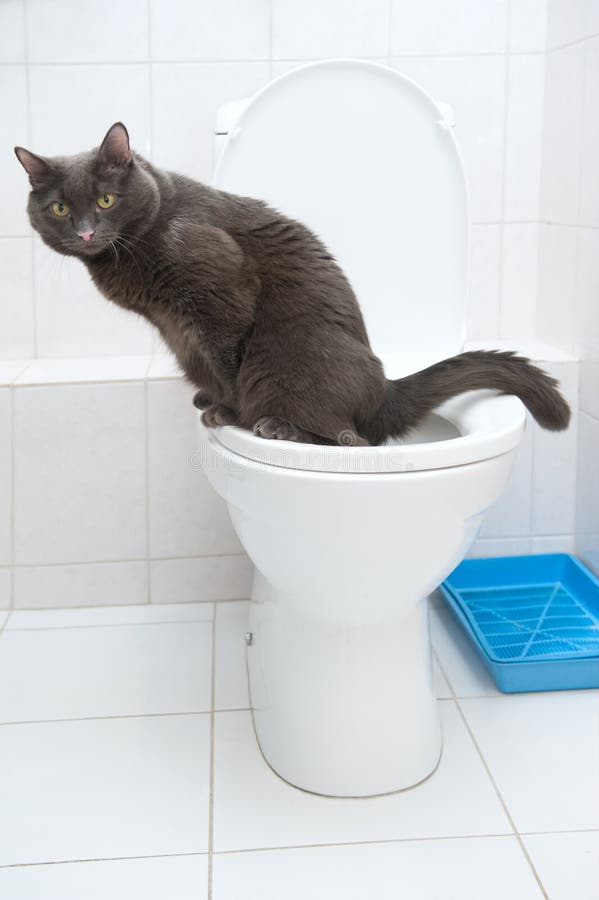Potential Issues of Flushing Cat Poop Down Your Toilet - Protect Your Pipes
Potential Issues of Flushing Cat Poop Down Your Toilet - Protect Your Pipes
Blog Article
We've discovered the article on Can You Flush Cat Poo or Litter Down the Toilet? down the page on the web and thought it made perfect sense to write about it with you on this site.

Intro
As pet cat owners, it's essential to bear in mind exactly how we throw away our feline close friends' waste. While it may appear practical to purge cat poop down the bathroom, this practice can have damaging effects for both the setting and human health.
Alternatives to Flushing
Luckily, there are more secure and more accountable means to throw away cat poop. Think about the following alternatives:
1. Scoop and Dispose in Trash
One of the most usual method of throwing away pet cat poop is to scoop it right into an eco-friendly bag and toss it in the garbage. Make sure to make use of a devoted litter scoop and get rid of the waste without delay.
2. Use Biodegradable Litter
Go with eco-friendly pet cat clutter made from products such as corn or wheat. These litters are environmentally friendly and can be securely taken care of in the garbage.
3. Hide in the Yard
If you have a yard, consider hiding feline waste in a marked location away from vegetable yards and water resources. Make certain to dig deep enough to stop contamination of groundwater.
4. Mount a Pet Waste Disposal System
Buy a family pet waste disposal system specifically developed for feline waste. These systems use enzymes to break down the waste, reducing odor and ecological influence.
Wellness Risks
Along with ecological issues, flushing pet cat waste can additionally pose wellness threats to people. Pet cat feces may include Toxoplasma gondii, a bloodsucker that can trigger toxoplasmosis-- a possibly severe ailment, especially for pregnant females and individuals with weakened body immune systems.
Environmental Impact
Flushing pet cat poop presents dangerous pathogens and parasites right into the supply of water, presenting a significant danger to aquatic ecological communities. These impurities can adversely impact marine life and concession water high quality.
Final thought
Liable family pet possession prolongs past supplying food and sanctuary-- it additionally includes correct waste monitoring. By refraining from purging pet cat poop down the commode and opting for alternate disposal methods, we can lessen our environmental footprint and shield human wellness.
Why Can’t I Flush Cat Poop?
It Spreads a Parasite
Cats are frequently infected with a parasite called toxoplasma gondii. The parasite causes an infection called toxoplasmosis. It is usually harmless to cats. The parasite only uses cat poop as a host for its eggs. Otherwise, the cat’s immune system usually keeps the infection at low enough levels to maintain its own health. But it does not stop the develop of eggs. These eggs are tiny and surprisingly tough. They may survive for a year before they begin to grow. But that’s the problem.
Our wastewater system is not designed to deal with toxoplasmosis eggs. Instead, most eggs will flush from your toilet into sewers and wastewater management plants. After the sewage is treated for many other harmful things in it, it is typically released into local rivers, lakes, or oceans. Here, the toxoplasmosis eggs can find new hosts, including starfish, crabs, otters, and many other wildlife. For many, this is a significant risk to their health. Toxoplasmosis can also end up infecting water sources that are important for agriculture, which means our deer, pigs, and sheep can get infected too.
Is There Risk to Humans?
There can be a risk to human life from flushing cat poop down the toilet. If you do so, the parasites from your cat’s poop can end up in shellfish, game animals, or livestock. If this meat is then served raw or undercooked, the people who eat it can get sick.
In fact, according to the CDC, 40 million people in the United States are infected with toxoplasma gondii. They get it from exposure to infected seafood, or from some kind of cat poop contamination, like drinking from a stream that is contaminated or touching anything that has come into contact with cat poop. That includes just cleaning a cat litter box.
Most people who get infected with these parasites will not develop any symptoms. However, for pregnant women or for those with compromised immune systems, the parasite can cause severe health problems.
How to Handle Cat Poop
The best way to handle cat poop is actually to clean the box more often. The eggs that the parasite sheds will not become active until one to five days after the cat poops. That means that if you clean daily, you’re much less likely to come into direct contact with infectious eggs.
That said, always dispose of cat poop in the garbage and not down the toilet. Wash your hands before and after you clean the litter box, and bring the bag of poop right outside to your garbage bins.
https://trenchlesssolutionsusa.com/why-cant-i-flush-cat-poop/

I stumbled upon that blog post on Don’t flush cat feces down the toilet while doing a lookup on the internet. Appreciated our piece? Please share it. Let another person check it out. Thanks a bunch for your time. Visit again soon.
Course Detail Report this page